Sport
How India became a Test cricket powerhouse
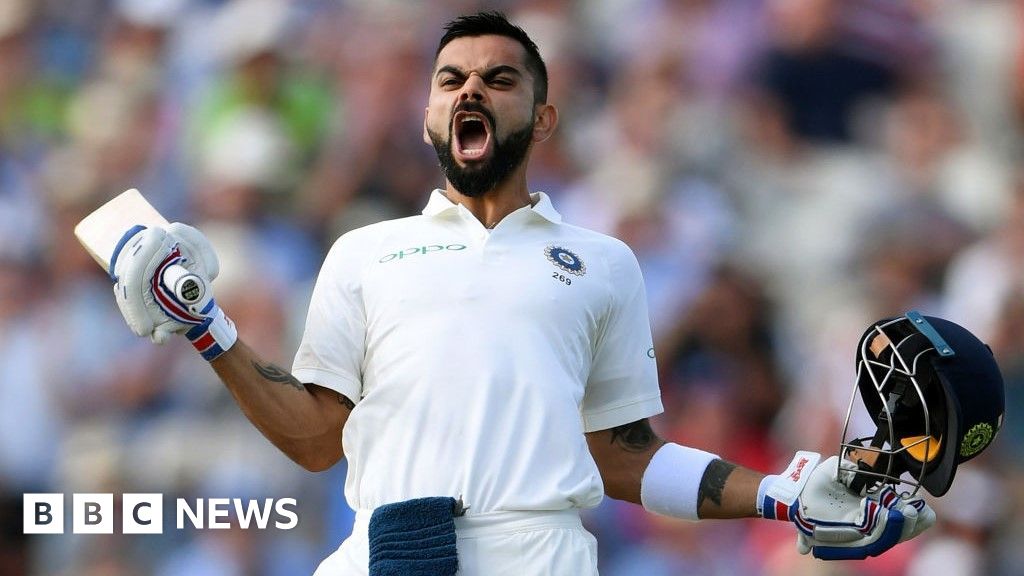
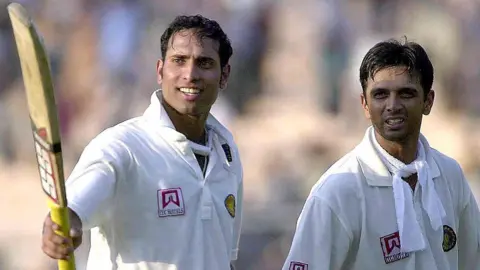 Getty Images
Getty ImagesMore than 90 years after India’s first Test match at Lord’s in 1932, Rohit Sharma’s team has made history. With a win over Bangladesh in Chennai last month, India now boasts more Test victories than losses, standing at 179 wins to 178 defeats across 580 Tests. Cricket writer Suresh Menon explores India’s remarkable transformation into a Test cricket powerhouse.
In every field of human endeavour, there are moments when circumstances and people align, sparking change.
In popular music this happened with the Beatles, where four boys emerged from the same place at the same time and created a new sound.
In sport, such changes are usually led by a single player who has around him a bunch who are almost as good. It happened in football with Pele as Brazil won three of four World Cups between 1958 and 1970 with him in the side.
With the arrival of a baby-faced Sachin Tendulkar, the fortunes of Indian cricket changed. His supporting cast was just as important to the transformation: Anil Kumble, Javagal Srinath, Zaheer Khan, Rahul Dravid, Virender Sehwag, VVS Laxman, Sourav Ganguly, Harbhajan Singh and MS Dhoni. Many would find a place in a team of all-time India greats.
Before Tendulkar’s debut in November 1989, India had won just 43 Tests and lost more than twice that number out of the 257 matches played. The remaining were draws.
In the Tendulkar era, India registered 78 wins against 60 losses out of the 217 matches played.
But it was a period when the number of draws – 79 – was still significant. Only seven wins had come in the “SANE” countries: South Africa, Australia, New Zealand and England. Draws in these countries were still seen as victory of sorts – the mindset with which India began international cricket.
Domestically, changes were happening. Led by Ganguly, and carried forward by Dhoni, India were discovering players beyond the traditional centres. If you were good enough, it didn’t matter where you were from; you would get your chance. This was despite the cricket board itself and the various local bodies often being drenched in politics.
Tendulkar retired in 2013, and since then India have won 58 while losing just 29 Tests of the 106 played. Significantly, there have been only 19 draws.
India won back-to-back series in Australia as they matched their rivals for aggression and in self-belief. This was no longer merely a cricketing change now, it was a psychological one.
Virat Kohli occasionally went beyond the pale as skipper, but he was passionate about Test cricket and passionate about winning – an attitude that seeped into the team.
Set to chase 364 in his first Test as captain in Adelaide in 2014, India nearly pulled it off and lost the match by just 48 runs.
It was a turning point. A new approach was created. Kohli, who led India in most Tests, at 68, was allergic to draws. It meant India played positive cricket at all times. Kohli drew just 16% of his Tests, the lowest among the top six captains in history. Even Clive Lloyd had 35% draws.
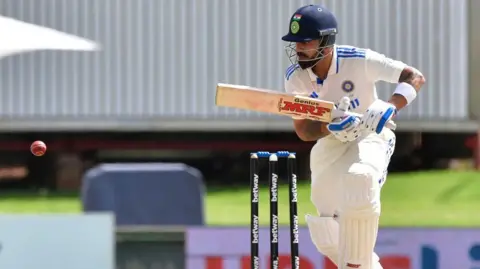 Getty Images
Getty ImagesKohli had a talented bunch around him – Cheteswar Pujara, Ajinkya Rahane, Ravichandran Ashwin, Ishant Sharma, Ravindra Jadeja, KL Rahul. Again, players were discovered outside the traditional centres.
Another psychological change was that India no longer worshipped at the altar of orthodoxy. Effectiveness was more important than style. Jasprit Bumrah, who fast-tracked into international cricket, and is possibly India’s greatest fast bowler, might not have made it in earlier generations. He is unorthodox; coaches would have recommended some other profession.
The cricket board too finally began to react to regular defeats abroad – India lost all Tests to Australia and England in a six-month span in 2011-12.
The golden generation was retiring. Much was made of the ineffectiveness of domestic cricket. The board decided that pitches had to help quick bowlers. It instructed curators to retain 3mm to 8mm grass on pitches. The result over a period was two-fold. India discovered a group of talented fast bowlers while also ensuring the batters could play fast bowling better.
You needed fast bowlers to win abroad consistently. The low points of Indian cricket can usually be traced to their weakness against fast bowling. In Manchester in 1952, they were dismissed twice on the same day – for 58 and 82 – as Fred Trueman and Alec Bedser ran through the side.
In the “Summer of 42” at Lord’s in 1974, they folded for 42 thanks to Geoff Arnold’s and Chris Old’s dominant bowling. It gave rise to one of the most cruel cartoons in sport, with a woman telling her husband emerging from the toilet, “You should have gone home. Now you have missed the entire Indian innings.”
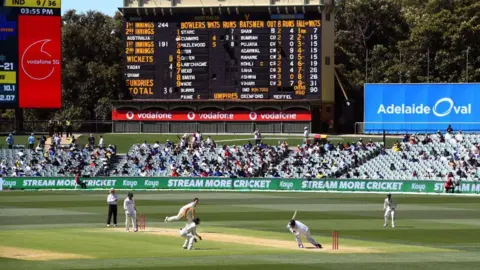 AFP
AFPHowever, India’s dismissal for 36 at Adelaide in 2020 inspired neither cartoons nor panic. That was accepted as a freak innings where every good ball picked a wicket and there were hardly any bad balls. But it required great confidence to pass it off as one of those things – that confidence carried India to victories in two Tests that followed, and with it the series.
There was a phase, 2002-2004, when India won Tests at Port of Spain, Leeds, Adelaide, Multan and Rawalpindi. But only in Pakistan did they win the series. Veteran writer David Frith thought India then had the finest Top 6 batting line-up in the history of the game. There was both heft and elegance, a rare combination.
But that team did not live up to its potential. This is one of the ironies of Indian cricket – that their most celebrated team did not dominate as they should have.
What the current team has is heart. That 36 in Adelaide and 78 in Leeds serve to highlight the temperament of players who can let bygones be bygones and remember only the good times. It is a rare quality in an individual, even rarer in a team.
In the past, Indian teams always had a couple of outstanding individuals on whom everything rested. With Sunil Gavaskar dismissed, half the team was gone. If the great spinners were collared, there was no one to turn to until Kapil Dev came along, and if he had a bad day, that was that.
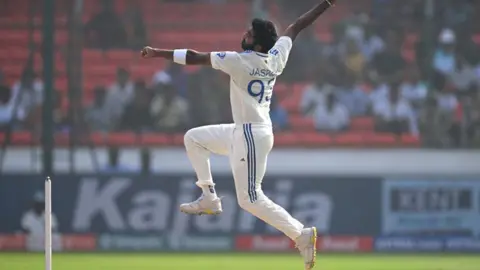 Getty Images
Getty ImagesIn the 1960s, India won only one series abroad, in New Zealand. That helped consolidate India’s biggest strength: spin bowling. That most romanticised generation led by a Nawab, Mansur Ali Khan of Pataudi, with its essentially amateur spirit was necessary. Just as necessary was the one represented by Tendulkar, when India performed with greater consistency.
All this was before the Kohli-led bunch of professionals could emerge. When India were first ranked No.1 in 2009, they had not won a series in Australia, South Africa or Sri Lanka. Now only South Africa remains.
Indian cricket has moved on, and now we are looking at the end game of the recent stars: Virat Kohli, Rohit Sharma, Ravichandran Ashwin, Ravindra Jadeja. Already, Rishabh Pant, Bumrah, Shubhman Gill, Yashaswi Jaiswal and a host of emerging fast bowlers have indicated they are ready to take over. India play five Tests in Australia starting in November.
Suddenly the pressure is on Australia. The Tendulkar generation constructed a solid foundation, the Kohli-Sharma one has built on that. At the end of the Chennai Test against Bangladesh, India’s wins outstripped losses, 179-178 in 580 Tests. Statistical evidence of a new India, if such were needed.
Sport
Wales captain Aaron Ramsey reveals ambition to manage his country

Ramsey – currently recovering from injury – sat in the stands for Cardiff City’s 5-0 thrashing of Plymouth Argyle last weekend and shared his tactical analysis with interim manager Omer Riza on the touchline.
“I’ve been around the [under] 18s a few times at Cardiff and been lucky enough to coach them,” said Ramsey.
“It’s addictive as well and you do watch games differently.”
Ramsey has not played since suffering a hamstring injury in Wales’ away win against Montenegro at the start of September.
He has resumed training but missed this month’s return against Montenegro and trip to Iceland, and it remains to be seen whether or not he will be fit for Wales’ final two Nations League fixtures against Turkey and Iceland next month.
Wales are unbeaten in four games under Bellamy and Ramsey has been impressed with the recently appointed head coach.
“He’s come in and him and his staff have been a breath of fresh air,” he said.
“They are so detailed with the amount of information they pass on, and I’ve been really impressed with them.
“With the talent we have in this Welsh team with Brennan Johnson, Harry Wilson and other players as well, we can hurt teams if we get the structure right behind them.”
Motorsports
McLaren will not seek right of review over Norris’s US GP penalty
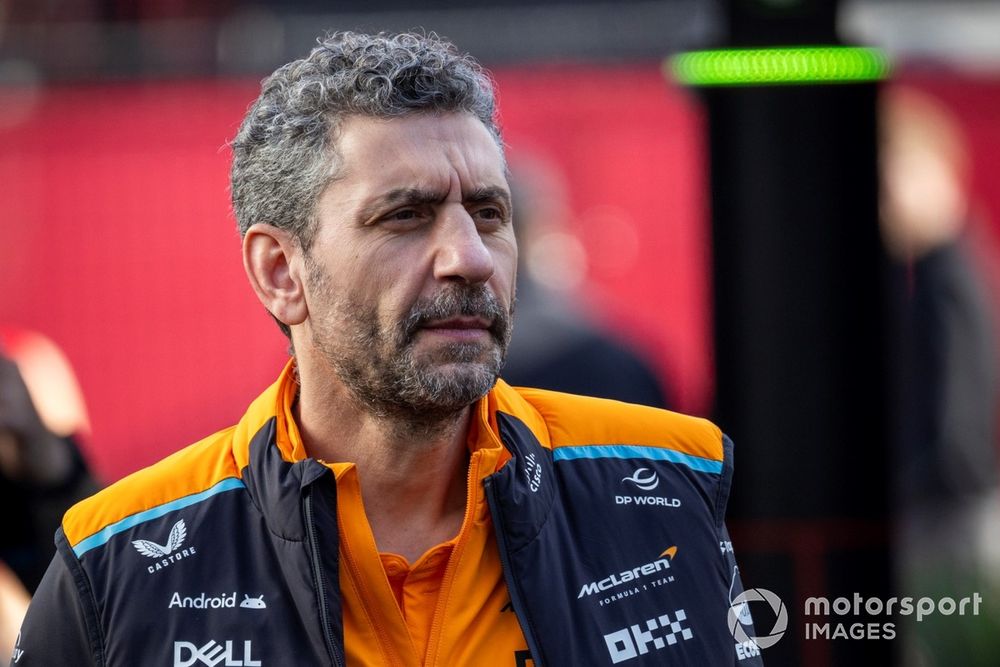
McLaren believes there is little point in asking the FIA for a right of review over Lando Norris’ punishment at the United States Grand Prix, despite its unhappiness at the sanction.
Norris was handed a five-second penalty in Austin after the race stewards deemed that he had overtaken Max Verstappen off the track as they battled for third place.
That sanction dropped Norris to fourth, behind his title rival, after the chequered flag and meant he lost further ground in the world championship battle.
The decision to punish Norris in an incident where Verstappen also ran off the circuit in a defensive move has triggered huge controversy and put a renewed focus on both the driving standards rules in F1 and the consistency of the stewards.
McLaren in particular feels it was a wrong call on two fronts – one in not taking into account the fact that Verstappen ran wide, and secondly in rushing the decision rather than waiting to speak to both drivers after the event.
McLaren team boss Andrea Stella said “The interpretation of this situation between McLaren and the stewards is the polar opposite.
“I am surprised the stewards didn’t even feel the need to discuss with the drivers after the race. It is an uncertain situation – so get the opinion of the drivers, and have the time to assess the situation with the level of details that is required when the situation is not so clear.
Andrea Stella, Team Principal, McLaren F1 Team
Photo by: Sam Bloxham / Motorsport Images
“Where is the urgency to interfere with the result of a race, with a championship [on the line], just because you have to make the decision in 60 seconds? It is a question mark that I think the stewards should take constructively and positively. Is it really needed to take a decision so quickly and, in our opinion, so wrongly?”
But despite its strong feelings over the matter, McLaren thinks there is little point in trying to take things on and potentially get the decision looked at again.
Due to the penalty being an in-race decision, there is no scope within the regulations for a standard appeal – and the route towards a right of review request does not look to be of interest either.
Stella said: “The decision cannot be appealed so for us, the matter is closed.
“For us, the drivers, the team, now we close this chapter. But we hope the FIA and the stewards review the case so that in the future we have a better stewardship of the racing. We now move on to the next race.”
The door to a right of review petition remains open until Thursday, with there being a 96-hour window following an event for it to be lodged.
For a request for a review hearing to be successful, it would require McLaren to produce “a significant and relevant new element…which was unavailable to the parties seeking the review at the time of the decision concerned.”
One option could as, as Mercedes famously did after the 2021 Brazilian Grand Prix, to wait until the onboard footage of Max Verstappen’s car is released and potentially use that as the means to justify another look.
But Stella is sceptical about offering anywhere near enough of a step of new evidence that would be acceptable for the FIA – with it frequently having rejected petitions that have been submitted.
“I don’t think new and relevant evidence exists because the only evidence we have used so far to assess our interpretation, which is in disagreement with the stewards, is already available,” he said.
“So, if you open up the right of review, I don’t think it will ever be successful because you don’t need new evidence. It is just a matter of interpretation.”
Sport
Why is William Saliba not suspended for Arsenal’s Champions League match tonight against Shakhtar Donetsk?

ARSENAL fans had been preparing themselves for life without William Saliba following his red card against Bournemouth – but he is available for selection TONIGHT!
The French phenomenon earned his first-ever sending-off after VAR intervened and upgraded an initial yellow card to a red.
And in normal procedures, Saliba would be suspended for the next match on the fixture list.
However, the highly-rated centre-half is part of the squad for Arsenal‘s home fixture tonight due to rules and regulations.
SunSport can explain what this is below.
Why is William Saliba not suspended for Arsenal’s Champions League match tonight?
William Saliba is eligible to play for Arsenal tonight as his suspension is for domestic competitions only.
And with this upcoming fixture being a European encounter, the Frenchman will be able to partner alongside Gabriel once again.
Saliba became the third Arsenal player to see red in eight Premier League matches for the Gunners this season.
Declan Rice was sent off against Brighton while Leandro Trossard received a red in the frenetic Manchester City clash.
Why did William Saliba get sent off?
The Frenchman was initially booked for pulling back Bournemouth striker Evanilson.
Saliba attempted to stop the Brazilian who was ready to burst completely clear mid-pitch.
VAR Jared Gillett summoned on-pitch ref Rob Jones to the monitor.
And after looking, Jones had no doubts as he waved a red to reduce the Gunners to 10 men.
How many matches will William Saliba miss for Arsenal?
Fortunately for Arsenal boss Mikel Arteta, William Saliba will miss just ONE game.
Had it been violent conduct, he would have been suspended for three matches.
However, that one match is against red-hot Liverpool this coming weekend at the Emirates.
What has been said?
Mikel Arteta highlighted that his side playing with ten men is always a problem.
“Playing with 10 men always is an issue.
“The trust is, when you analyse it, three different very actions and the outcome of them, the reasons are very different.
“Regardless of that we cannot continue to play with 10 men at this level. We need to eradicate that, it’s clear.”
Arteta added: “The reasons, how; it doesn’t matter. We have to focus.
“We cannot continue to play with ten men, easier to say it then to get it done,” he said.
“Specific moments. Reacting, we have a defeat. Very specific conditions as well.”
Football
Barcelona v Atletico Madrid could be first La Liga match held in United States

Barcelona’s league fixture against Atletico Madrid in December could be staged in Miami – with La Liga officials hopeful that Fifa will approve the plan.
It would be the first time a La Liga match has been played in the United States.
Fifa, football’s world governing body, will make the final decision on the proposal.
The match is currently scheduled for 22 December, before La Liga pauses for its winter break.
Both Atletico and Barcelona are scheduled to play in a four-team Spanish Super Cup in early January, which is being held in Saudi Arabia.
In April, Fifa withdrew from a legal challenge by leading match promoter Relevent, which is seeking to stage overseas league matches in the United States.
The following month, Fifa announced it was setting up a working group to look at the potential impact of competitive domestic matches being played abroad.
Sport
Joseph Suaalii: Rugby league convert named in Australia squad

Big-money rugby league convert Joseph Suaalii has been named in Australia’s 34-man squad to travel to the northern hemisphere next month.
The 21-year-old former Sydney Roosters wing or centre is yet to play a professional rugby union game after a switch from league reportedly worth more than 5m Australian dollars (£2.6m).
Uncapped former Leicester wing Harry Potter, now with Western Force, has also been named in Joe Schmidt’s squad for their tour of the United Kingdom and Ireland.
Schmidt said that Suaalii – who he will use at centre, wing or full-back – needed to be brought in now in preparation for Australia’s home series against the British and Irish Lions next year.
“I’d be lying if I said that I wasn’t conscious of the big deal that he’s on and the profile that he has, because you can’t not be aware of that,” said Schmidt.
“As much as we think maybe it might have been better to come through [the second string Australia XV], part of it is that we play the Lions next year.
“So if he doesn’t debut on this tour, then there’s very little window. There may be one opportunity to play before the Lions next year, and that would be it. So for us, we feel a little bit of pressure to be able to fast-track him.”
Waratahs fly-half Tane Edmed, 21, is the third uncapped player called up, while last year’s World Cup captain Will Skelton is named.
The 32-year-old lock missed the Wallabies’ summer Tests and the Rugby Championship because of commitments to French club La Rochelle.
“He’s [Skelton’s] keen as mustard,” added Schmidt. “He didn’t need any convincing to play for the Wallabies. He’s a really positive character and he has real gravitas in the group.”
Centre Samu Kerevi also returns to international rugby for the first time this year – but the 31-year-old, who plays his club rugby in Japan, and Skelton will be unavailable to face Ireland in Dublin on 30 November as the game falls outside the international window.
Australia first face England at Twickenham’s Allianz Stadium on 9 November before playing Wales in Cardiff on 17 November and Scotland at Murrayfield on 24 November.
The Wallabies – who finished bottom of the Rugby Championship after recording only one victory, over Argentina – also named a 30-player Australia XV squad to travel to the UK for matches against Bristol on 8 November and England A at Twickenham Stoop on 17 November.
Motorsports
How Austin exposed the flaws in F1’s driving standards guidelines
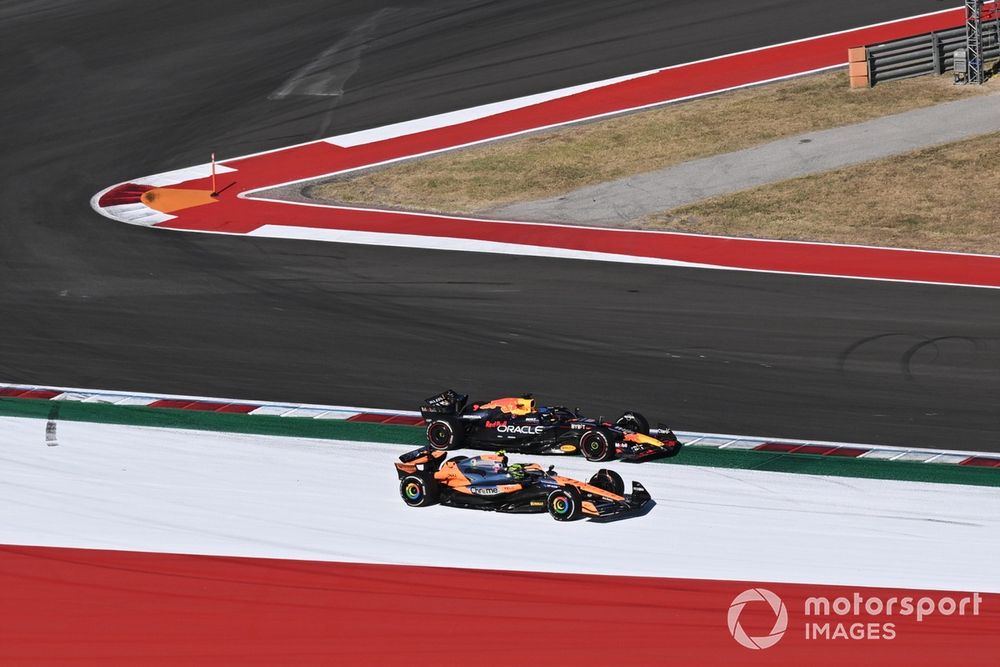
The controversy over the Lando Norris/Max Verstappen overtake in Austin has once again put a spotlight on the way Formula 1 is policed.
Fans are divided about whether it was right that Norris got a penalty for overtaking off track in an incident when his rival had run off the circuit in his efforts to defend against him.
It delivered flashbacks to the battle between Verstappen and Lewis Hamilton at the 2021 Brazilian Grand Prix where defending by running wide became a major bone of contention.
What is different now compared to back then is that F1 is operating under a new system where there are common and agreed Driving Standards Guidelines.
As reported by Motorsport.com, this formal document has been pulled together outlining the basis on which stewards will make their decisions, and this is set to be rolled into the FIA’s 2025 International Sporting Code, so will be applied to all categories in the future.
But while the guidelines were aimed at making things clearer in drivers’ heads about what is and is not allowed, what happened at Turn 12 in Austin has perhaps only served to add some confusion, as well as expose some big flaws with how things are judged.
The debate over Verstappen running wide

Lando Norris, McLaren MCL38, battles with Max Verstappen, Red Bull Racing RB20
Photo by: Sam Bagnall / Motorsport Images
What is mentioned in the guidelines themselves is that no two incidents are the same, and this is in essence one of the key problems when it comes to creating hard and fast rules – because what fits one move may not be right for another.
But one recurring theme from the Norris penalty decision is the fact that Verstappen went off track himself – and that makes the situation less crystal clear than if he had remained within the white lines.
While Norris clearly did not fulfil the guideline’s criterion to be alongside his rival at the apex, equally there is a question over Verstappen’s defence.
As the guidelines clearly states: “If, while defending a position, a car leaves the track (or cuts a chicane) and re-joins in the same position, it will generally be considered by the stewards as having gained a lasting advantage and therefore, generally, the position should be given back, as prescribed in the rules. It will be the sole discretion of the Stewards to determine if the driver of a car is “defending a position”.”
So, are we in a world where if Norris had stayed on the track and aborted his move, then Verstappen would have had to give up the place and Norris would have been better off?
That is something only the FIA stewards will know for sure.
As Williams driver Alex Albon said: “I thought normally if they both don’t make the track, then that gets a bit grey….That reminds me of Brazil [2021].
“I think if you can stay on the track, fair enough. You’ve got it.”
This viewpoint is something that Norris himself made reference to.
“For me, whatever I did, I did for me,” he said. “The point that is incorrect is what Max did, which is also defend his position by going off the track, and what effectively would be keeping his position, which is not correct.
“He went off the track by defending, and he’s overdefended and made a mistake, and therefore he’s gained from that.
“At the same time, because of that, I’ve had to go off the track. It’s impossible for people to know if I could have made it on the track or couldn’t.
“Therefore, you cannot steward that kind of thing.”
The apex issue

Oscar Piastri, McLaren MCL38, Pierre Gasly, Alpine A524, Liam Lawson, RB F1 Team VCARB 01
Photo by: Glenn Dunbar / Motorsport Images
The way that the guidelines are so focused on what is happening at the apex of the corner means there is a clear incentive to make sure that you brake late, so you are there first – as that then gives you far more rights as to how much space needs to be left on the exit.
But even then, drivers are not convinced that everything is being treated equally. For example, Oscar Piastri failed to understand why he got a penalty in the sprint for forcing Pierre Gasly wide at Turn 12 in a near-identical moment to what happened between Norris and Verstappen – and especially considering he managed to stay on track.
“I think if you look at my penalty from the sprint, it was basically a carbon copy of Max and Lando, but I stayed on the track and I got the penalty,” said Piastri. “So no, it’s not very clear, You know, it’s tough. Yeah, it’s just very difficult.
“I feel like as drivers we also all kind of have different interpretations of what we think is fair and what’s not, especially when it comes to being on the outside of another driver.
“But the difference of 10 centimetres or 20 centimetres can be the difference of you having the right to space or not having the right to space. And obviously, for the stewards, who generally haven’t driven a car very much, it’s very tough to judge that in the moment especially.
“I think my incident and Lando and Max’s [in the race] looked very similar with the opposite penalties. So, I’m sure we’ll have some questions.”
The role of the stewards

FIA officials walk the track, including steward Derek Warwick
Photo by: Sam Bagnall / Motorsport Images
The other problem that has been highlighted by the Norris/Verstappen incident is that once again the stewards are open to accusations of a lack of consistency.
Fans question how variable the decisions are, and drivers themselves are unclear about why sometimes calls go different ways for what look like similar incidents.
Norris himself questioned why he had been penalised for overtaking off track in Austin, while in Austria, Verstappen was not investigated despite running off the track to keep hold of the lead after a move from his McLaren rival – who had ticked off getting to the apex first.
“The rules, they seem to change, because I feel like it’s quite inconsistent from, say, what happened in Austria, where Max didn’t get a penalty and went off the track, and gained an advantage,” said the Briton. “So, I think there’s again inconsistency.”
That inconsistency – and the fact that the basis of decisions is not explained in full – is further clouded by the fact that the stewards’ panel often rotates.
Mercedes boss Toto Wolff in particular suggests that the lack of consistency across the year is fuelled by the fact that he thinks not all stewards operate to the same level.
“There’s always going to be someone that’s happy and the other one unhappy, but we need to try to understand whether there are certain patterns in stewarding decisions, and whether that correlates to some of the situations,” said Wolff, who was furious that Russell got a penalty for forcing Valtteri Bottas wide.
“Everybody’s racing hard, but for me, the decision against George was inexplicable.”
In the Russell case, he had not fulfilled the criteria of the guideline in getting to the apex ahead – so that meant he had to give Bottas room on the outside.
Had he come off the brakes earlier and focused more on getting to the apex first, then irrespective of how he managed to collect things up after that, he would have escaped a sanction as the track was effectively all his.
Wolff added: “We’ve seen plenty of these situations in Turn 12. None of them was penalised until George did it.”
Speaking more about the make-up of the stewards, Wolff added: “I think there’s great stewards, honestly, great stewards that have either been in the racing car or have a non-biased view on situations, doing the best of their abilities for a job that is truly difficult. And we mustn’t put everybody in the same category.
“There’s a few inconsistencies, but I’m sure the president is going to look at that.”
It will be interesting if Austin proves to be a trigger for Mohammed Ben Sulayem to look at the system once more and the way things are done as F1 is in the headlines again for all the wrong reasons.
-

 Science & Environment1 month ago
Science & Environment1 month agoHyperelastic gel is one of the stretchiest materials known to science
-

 Technology4 weeks ago
Technology4 weeks agoIs sharing your smartphone PIN part of a healthy relationship?
-

 Science & Environment1 month ago
Science & Environment1 month ago‘Running of the bulls’ festival crowds move like charged particles
-

 Science & Environment1 month ago
Science & Environment1 month agoHow to unsnarl a tangle of threads, according to physics
-

 Science & Environment1 month ago
Science & Environment1 month agoMaxwell’s demon charges quantum batteries inside of a quantum computer
-

 Technology1 month ago
Technology1 month agoWould-be reality TV contestants ‘not looking real’
-

 Science & Environment4 weeks ago
Science & Environment4 weeks agoX-rays reveal half-billion-year-old insect ancestor
-

 Science & Environment1 month ago
Science & Environment1 month agoSunlight-trapping device can generate temperatures over 1000°C
-

 Science & Environment1 month ago
Science & Environment1 month agoLiquid crystals could improve quantum communication devices
-

 Science & Environment1 month ago
Science & Environment1 month agoQuantum ‘supersolid’ matter stirred using magnets
-

 Womens Workouts4 weeks ago
Womens Workouts4 weeks ago3 Day Full Body Women’s Dumbbell Only Workout
-

 Technology3 weeks ago
Technology3 weeks agoUkraine is using AI to manage the removal of Russian landmines
-

 TV3 weeks ago
TV3 weeks agoসারাদেশে দিনব্যাপী বৃষ্টির পূর্বাভাস; সমুদ্রবন্দরে ৩ নম্বর সংকেত | Weather Today | Jamuna TV
-

 Science & Environment1 month ago
Science & Environment1 month agoLaser helps turn an electron into a coil of mass and charge
-

 Science & Environment1 month ago
Science & Environment1 month agoWhy this is a golden age for life to thrive across the universe
-

 Science & Environment1 month ago
Science & Environment1 month agoA new kind of experiment at the Large Hadron Collider could unravel quantum reality
-

 Science & Environment1 month ago
Science & Environment1 month agoQuantum forces used to automatically assemble tiny device
-

 Science & Environment1 month ago
Science & Environment1 month agoNerve fibres in the brain could generate quantum entanglement
-

 Science & Environment1 month ago
Science & Environment1 month agoHow to wrap your mind around the real multiverse
-

 Science & Environment1 month ago
Science & Environment1 month agoA slight curve helps rocks make the biggest splash
-

 News1 month ago
News1 month ago▶️ Hamas in the West Bank: Rising Support and Deadly Attacks You Might Not Know About
-
Business3 weeks ago
DoJ accuses Donald Trump of ‘private criminal effort’ to overturn 2020 election
-

 News3 weeks ago
News3 weeks agoMassive blasts in Beirut after renewed Israeli air strikes
-

 News2 weeks ago
News2 weeks agoNavigating the News Void: Opportunities for Revitalization
-

 MMA3 weeks ago
MMA3 weeks agoJulianna Peña trashes Raquel Pennington’s behavior as champ
-

 Business2 weeks ago
Business2 weeks agoWhen to tip and when not to tip
-

 Football3 weeks ago
Football3 weeks agoRangers & Celtic ready for first SWPL derby showdown
-

 Science & Environment1 month ago
Science & Environment1 month agoITER: Is the world’s biggest fusion experiment dead after new delay to 2035?
-

 News1 month ago
News1 month ago▶️ Media Bias: How They Spin Attack on Hezbollah and Ignore the Reality
-
News1 month ago
the pick of new debut fiction
-

 Science & Environment1 month ago
Science & Environment1 month agoNuclear fusion experiment overcomes two key operating hurdles
-

 News4 weeks ago
News4 weeks agoOur millionaire neighbour blocks us from using public footpath & screams at us in street.. it’s like living in a WARZONE – WordupNews
-

 Science & Environment1 month ago
Science & Environment1 month agoTime travel sci-fi novel is a rip-roaringly good thought experiment
-

 Technology3 weeks ago
Technology3 weeks agoMicrophone made of atom-thick graphene could be used in smartphones
-

 Technology3 weeks ago
Technology3 weeks agoSamsung Passkeys will work with Samsung’s smart home devices
-

 News2 weeks ago
News2 weeks ago▶ Hamas Spent $1B on Tunnels Instead of Investing in a Future for Gaza’s People
-

 Sport2 weeks ago
Sport2 weeks agoWales fall to second loss of WXV against Italy
-

 Science & Environment1 month ago
Science & Environment1 month agoPhysicists have worked out how to melt any material
-

 Technology4 weeks ago
Technology4 weeks agoWhy Machines Learn: A clever primer makes sense of what makes AI possible
-

 MMA3 weeks ago
MMA3 weeks agoPereira vs. Rountree prediction: Champ chases legend status
-

 Sport3 weeks ago
Sport3 weeks agoBoxing: World champion Nick Ball set for Liverpool homecoming against Ronny Rios
-

 MMA2 weeks ago
MMA2 weeks ago‘Uncrowned queen’ Kayla Harrison tastes blood, wants UFC title run
-

 Sport3 weeks ago
Sport3 weeks agoWorld’s sexiest referee Claudia Romani shows off incredible figure in animal print bikini on South Beach
-

 Technology3 weeks ago
Technology3 weeks agoThis AI video generator can melt, crush, blow up, or turn anything into cake
-

 TV2 weeks ago
TV2 weeks agoLove Island star sparks feud rumours as one Islander is missing from glam girls’ night
-

 Sport2 weeks ago
Sport2 weeks agoCoco Gauff stages superb comeback to reach China Open final
-

 Technology1 month ago
Technology1 month agoMeta has a major opportunity to win the AI hardware race
-

 Technology3 weeks ago
Technology3 weeks agoMusk faces SEC questions over X takeover
-

 Sport3 weeks ago
Sport3 weeks agoSturm Graz: How Austrians ended Red Bull’s title dominance
-

 News2 weeks ago
News2 weeks agoFamily plans to honor hurricane victim using logs from fallen tree that killed him
-

 MMA2 weeks ago
MMA2 weeks agoPereira vs. Rountree preview show live stream
-
Business3 weeks ago
Bank of England warns of ‘future stress’ from hedge fund bets against US Treasuries
-

 MMA3 weeks ago
MMA3 weeks agoDana White’s Contender Series 74 recap, analysis, winner grades
-

 News3 weeks ago
News3 weeks agoHeartbreaking end to search as body of influencer, 27, found after yacht party shipwreck on ‘Devil’s Throat’ coastline
-

 News3 weeks ago
News3 weeks ago‘Blacks for Trump’ and Pennsylvania progressives play for undecided voters
-

 Technology3 weeks ago
Technology3 weeks agoTexas is suing TikTok for allegedly violating its new child privacy law
-

 Money3 weeks ago
Money3 weeks agoWetherspoons issues update on closures – see the full list of five still at risk and 26 gone for good
-

 News2 weeks ago
News2 weeks agoHeavy strikes shake Beirut as Israel expands Lebanon campaign
-

 Sport2 weeks ago
Sport2 weeks agoMan City ask for Premier League season to be DELAYED as Pep Guardiola escalates fixture pile-up row
-

 Science & Environment1 month ago
Science & Environment1 month agoPhysicists are grappling with their own reproducibility crisis
-

 Business3 weeks ago
Business3 weeks agoChancellor Rachel Reeves says she needs to raise £20bn. How might she do it?
-

 TV3 weeks ago
TV3 weeks agoPhillip Schofield accidentally sets his camp on FIRE after using emergency radio to Channel 5 crew
-
Business3 weeks ago
Sterling slides after Bailey says BoE could be ‘a bit more aggressive’ on rates
-

 News3 weeks ago
News3 weeks agoGerman Car Company Declares Bankruptcy – 200 Employees Lose Their Jobs
-

 MMA3 weeks ago
MMA3 weeks agoAlex Pereira faces ‘trap game’ vs. Khalil Rountree
-

 TV3 weeks ago
TV3 weeks agoMaayavi (මායාවී) | Episode 23 | 02nd October 2024 | Sirasa TV
-

 Technology3 weeks ago
Technology3 weeks agoPopular financial newsletter claims Roblox enables child sexual abuse
-

 Technology2 weeks ago
Technology2 weeks agoA very underrated horror movie sequel is streaming on Max
-

 Sport1 month ago
Sport1 month agoJoshua vs Dubois: Chris Eubank Jr says ‘AJ’ could beat Tyson Fury and any other heavyweight in the world
-
Business3 weeks ago
Eurosceptic Andrej Babiš eyes return to power in Czech Republic
-

 News1 month ago
News1 month agoYou’re a Hypocrite, And So Am I
-

 Science & Environment1 month ago
Science & Environment1 month agoRethinking space and time could let us do away with dark matter
-

 Science & Environment1 month ago
Science & Environment1 month agoA tale of two mysteries: ghostly neutrinos and the proton decay puzzle
-
News1 month ago
The Project Censored Newsletter – May 2024
-

 Technology3 weeks ago
Technology3 weeks agoArtificial flavours released by cooking aim to improve lab-grown meat
-

 Technology3 weeks ago
Technology3 weeks agoUniversity examiners fail to spot ChatGPT answers in real-world test
-

 Technology3 weeks ago
Technology3 weeks agoAmazon’s Ring just doubled the price of its alarm monitoring service for grandfathered customers
-

 News2 weeks ago
News2 weeks agoHull KR 10-8 Warrington Wolves – Robins reach first Super League Grand Final
-

 MMA2 weeks ago
MMA2 weeks agoUFC 307 preview show: Will Alex Pereira’s wild ride continue, or does Khalil Rountree shock the world?
-

 Money2 weeks ago
Money2 weeks agoWhy thousands of pensioners WON’T see State Pension rise by full £460 next year
-

 Technology2 weeks ago
Technology2 weeks agoHow to disable Google Assistant on your Pixel Watch 3
-

 Technology2 weeks ago
Technology2 weeks agoThe best budget robot vacuums for 2024
-

 News2 weeks ago
News2 weeks agoBalancing India and China Is the Challenge for Sri Lanka’s Dissanayake
-

 Technology2 weeks ago
Technology2 weeks agoThe best shows on Max (formerly HBO Max) right now
-

 Technology2 weeks ago
Technology2 weeks agoIf you’ve ever considered smart glasses, this Amazon deal is for you
-

 Technology3 weeks ago
Technology3 weeks agoEpic Games CEO Tim Sweeney renews blast at ‘gatekeeper’ platform owners
-

 Science & Environment3 weeks ago
Science & Environment3 weeks agoMarkets watch for dangers of further escalation
-

 Football3 weeks ago
Football3 weeks agoSimo Valakari: New St Johnstone boss says Scotland special in his heart
-

 Technology3 weeks ago
Technology3 weeks agoJ.B. Hunt and UP.Labs launch venture lab to build logistics startups
-

 Technology3 weeks ago
Technology3 weeks agoBest iPad deals for October 2024
-

 News3 weeks ago
News3 weeks agoWoman who died of cancer ‘was misdiagnosed on phone call with GP’
-
Business3 weeks ago
CEOs turn to podcasts to control their message
-

 Sport3 weeks ago
Sport3 weeks agoChina Open: Carlos Alcaraz recovers to beat Jannik Sinner in dramatic final
-

 News3 weeks ago
News3 weeks agoHungry customer left gobsmacked as two blokes riding giant HORSES stroll into local chip shop
-

 MMA3 weeks ago
MMA3 weeks agoKayla Harrison gets involved in nasty war of words with Julianna Pena and Ketlen Vieira
-

 Technology3 weeks ago
Technology3 weeks agoApple iPhone 16 Plus vs Samsung Galaxy S24+
-

 Technology3 weeks ago
Technology3 weeks agoUlefone Armor Pad 4 Ultra is now available, at a discount
-

 News3 weeks ago
News3 weeks agoReach CEO Jim Mullen: If government advertises with us, we’ll employ more reporters
-
Business3 weeks ago
Maurice Terzini’s insider guide to Sydney
-
Politics3 weeks ago
Rosie Duffield’s savage departure raises difficult questions for Keir Starmer. He’d be foolish to ignore them | Gaby Hinsliff






You must be logged in to post a comment Login